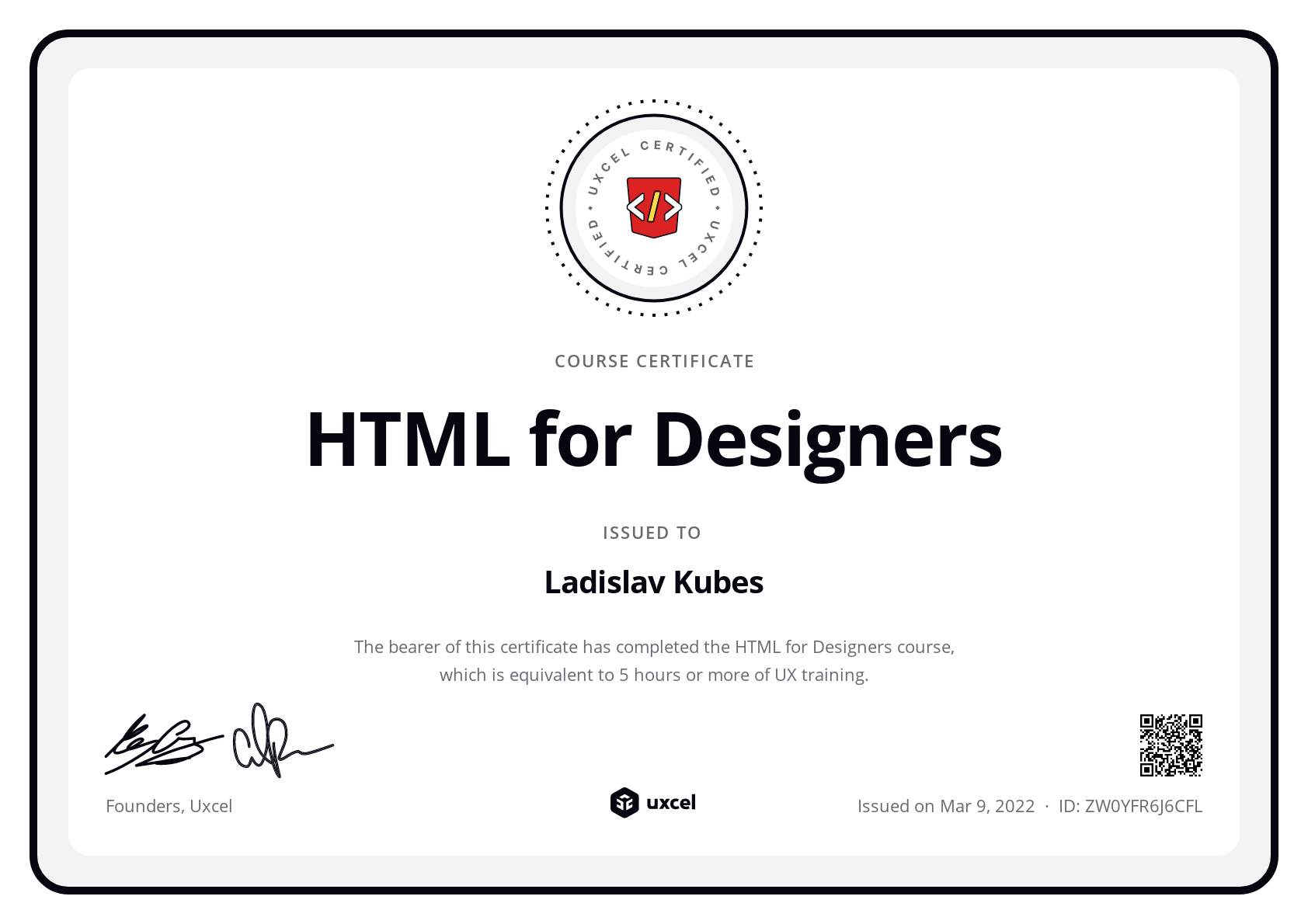Certificate of completion
HTML Foundations
The bearer of this certificate has completed the HTML Foundations course, which is equivalent of 5 hours or more of professional training.

Explore popular courses

UX Design Foundations

CSS Foundations

Introduction to Figma
FAQs
The HTML for Designers course is an ideal starting point for anyone interested in web development. The course covers the standard language used to create and display content on websites, including HTML tags, elements, and attributes, as well as CSS styles. These concepts form the foundation of web development, and understanding them is essential to creating professional-quality websites.
In addition to the core concepts, the course covers topics such as web page structure, hyperlinks, images, forms, and multimedia. These components are crucial in creating engaging and dynamic websites that meet the needs and preferences of users.
The course also provides an overview of responsive design and how to apply it to your websites. Whether you're just entering the web development field or looking to enhance your skills as a designer, this course will help you structure your knowledge and build the skills necessary for a successful career in web development.
By the end of the course, you'll have a solid foundation in HTML and you'll be able to create professional-quality websites. Additionally, having HTML skills can make anyone’s resume more attractive to potential employers, as it demonstrates the ability to work with a widely-used technology in the industry.
No, a certain background is not required to take the HTML for Designers course. The course is designed to help designers understand HTML from scratch. If you are already familiar with HTML foundations, this course can still be helpful as a tool for brushing up your knowledge.
While it is not strictly necessary for UX designers to know HTML, having some knowledge of HTML can be beneficial in a number of ways.
Having an understanding of HTML can help UX designers better communicate with developers. When designers can speak the same language as developers, it can help bridge the gap between design and development teams and make the handoff process smoother. By having a basic understanding of HTML, designers can create designs that are more easily implemented by developers, reducing the likelihood of misinterpretation or miscommunication.
Secondly, understanding HTML can help designers create more realistic and accurate mockups. With an understanding of HTML, designers can create wireframes and prototypes that are more closely aligned with the final product. This can help ensure that the design is more effective and that the development process runs more smoothly.
Lastly, HTML knowledge can help UX designers understand the limitations and capabilities of the technology they are designing for. By understanding the constraints of HTML and CSS, designers can create designs that are optimized for the web and mobile devices, resulting in a better user experience.
For new learners, the first level of each course is available free of charge! This allows you to experience the course without any initial investment.
However, if you're seeking a deeper and more comprehensive learning journey, we recommend our Pro Membership. With this subscription, you gain full access to all our courses, which includes additional lessons, engaging design challenges, and thorough assessments.
Additionally, Pro Membership entitles you to receive a certificate upon completion of a course and personalized feedback from experts for all your challenge submissions. To explore the pricing details and find the best plan for your learning needs, please visit our pricing page.




